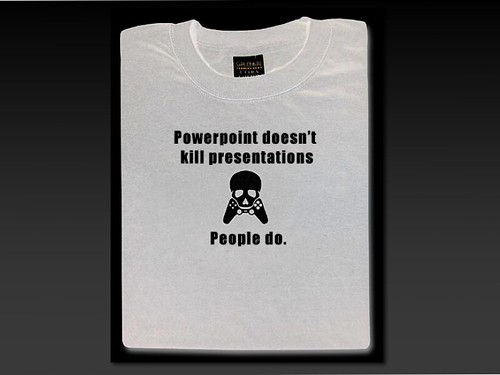Wrapping paper can be expensive; add on the bows and other silly crap, and just the wrapping decorations on a single present can be a few bucks. We went searching for a clean and professional way to inexpensively wrap corporate gifts -- we send out about 150 gifts -- while also creating some branding on the wrapping. Here's what we came up with:

This is basic brown shipping paper that you can purchase in any office supply or paper store. We wound up buying a pretty large roll of it in a 50 weight, but the entire roll was less than $50. The logo is applied with a self-inking rubber stamp that cost us around $25 and was produced in 24 hours by OfficeMax.
In order to wrap the presents, we simply measured paper strips against the boxes we were wrapping and pre-cut them. Prior to actually applying the paper, we randomly hit the paper with the Argus stamp -- it works best on a very hard surface as opposed to stamping after the box is wrapped. To keep a clean look, we wrapped the bottom and corners and held them closed with scotch tape. Then we applied adhesive brown packing tape (it has to be wet with a sponge) so that no seams were visible. We wound up with exactly what you see in the picture and exactly what we wanted: a clean, professional-looking wrapping that displays our brand.
However, you do not have to limit this method to corporate gifts, it works just as well for home applications. A side bonus is that you can tear off a big chunk of paper for your kids any time and let them draw all over it throughout the entire year; wouldn't want do that with wrapping paper. You can also use the paper as an expensive and disposable tablecloth -- if you get the heavyweight stuff, it will absorb some amount of spills and if you have a party with kids, they can draw all over it.
Happy wrapping.











